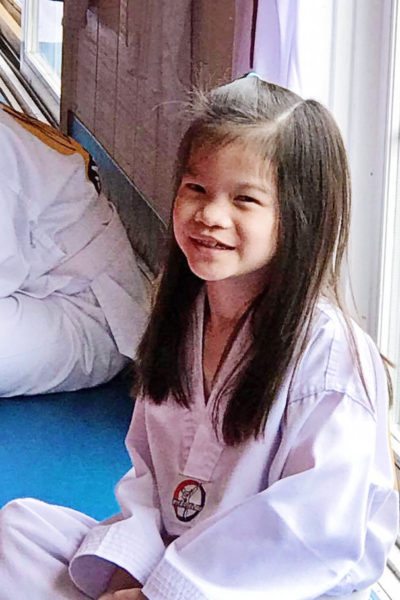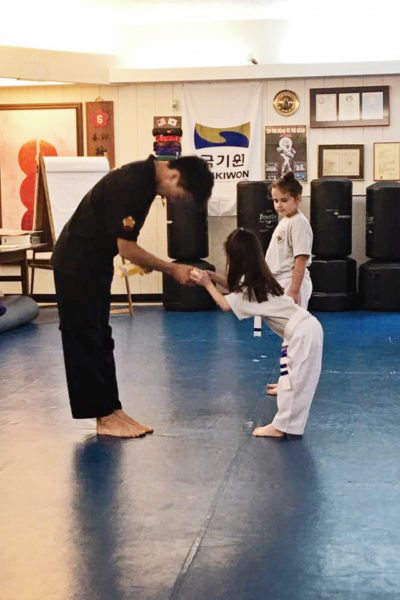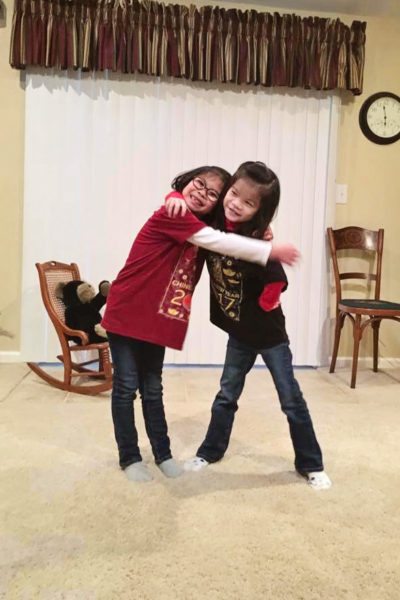Almost four years ago, my husband finally said yes. Again.
We had talked, I had prayed. I’d promised not to nag, prayed some more, and waited for that yes.
When he agreed to begin our second adoption, he had limits. He had the idea to draw some lines in the sand of what special needs we could manage.
But God had other ideas for our family.
Just a few days after making the decision to adopt from China once again, my best friend sent me a photo of an adorable little girl with a pixie haircut and rosebud lips. My heart melted, I knew immediately that she was supposed to be my daughter. The deal was sealed when I saw her advocacy name….Lexi. For years I thought I would have another daughter, and we would name her Alexis.
Lexi’s file stated she had a heart condition and some minor delays but overall was a healthy, vibrant little four year old.
Ten months after seeing her face we were finally meeting her, our Alexis. She was very tiny at five years old, weighing just 21 pounds and was so pale. She could barely walk a few steps, and I was perplexed because only six months prior I was sent a video of her running to meet her foster father.
My baby was sick, I knew that. I just didn’t know how sick she was.
During our time in China, Lexi had horrible stomach pains and, even with regular meals, she was not gaining any strength. We trudged forward and made it through the two weeks in China with the unknowns hanging over our heads.
After a couple of weeks of being home, we visited the cardiologist, expecting to hear that her heart was fine, come back in a year. What we heard was something like that, plus a little more.
Her heart was fine and the surgery she had in China did repair the heart conditions listed on her file. But the echocardiogram also showed that she had a left aortic arch and a vascular ring that was just barely pressing on her esophagus. The cardiologist was not concerned about either of those issues at the moment and said it could be years or never that those could cause problems.
As I was breathing a sigh of relief, he mentioned that the echocardiogram showed something different in her lower aorta and he was going to schedule an MRI to investigate further. He also mentioned that her blood pressure was abnormally high.
Two weeks passed and the day of the MRI arrived. We were anxiously waiting in in the waiting room and were finally told to come back to recovery. When we entered the room, we were met with a team of doctors ranging from infectious disease, neurology, rheumatology and cardiology. We were told that Lexi had what appeared to be a blockage in her lower aorta and her blood pressure was at a dangerous level… she was being admitted into Cardiac Intensive Care. At that time her risk for a stroke was 100%.
After spending a week in the hospital, we left with the devastating news that Lexi had a rare autoimmune disease called Takayasu’s arteritis. Takayasu’s arteritis, also called TAK, is a rare form of vasculitis disease involving inflammation in the walls of the largest arteries in the body: the aorta and its main branches. The disease results from an attack by the body’s own immune system, causing inflammation in the walls of arteries.
In Takayasu’s arteritis, the inflammation damages the aorta — the large artery that carries blood from your heart to the rest of your body — and its main branches. The disease can lead to blockages or narrowed arteries (stenosis) or abnormally dilated arteries (aneurysms). TAK can also lead to arm or chest pain and high blood pressure and eventually to heart failure or stroke.
Takayasu’s arteritis can be fatal.
This is what happened to Lexi. TAK attacked her lower aorta causing blockage but it also caused damage to her superior mesenteric artery which feeds blood to her colon, pancreas, and appendix. Lexi’s femoral arteries were gone and were being fed by feeder arteries from the damaged aorta.
For two years the doctors tried to stop the inflammation from TAK, but it would not go away. Lexi’s symptoms were getting worse: her feet were always cold, her blood pressure was generally 150/120, and the fear of her having a stroke was growing. In November 2016, her team of physicians made the decision to bypass her lower aorta in order to alleviate those symptoms.
On December 6, 2016 Lexi went in for surgery. The surgery was scheduled to last 8-10 hours, but just two hours after leaving her side, we were called to meet with the doctor. Before they could even begin the actual surgery, Lexi went into cardiac arrest and had to be resuscitated. The surgeon and anesthesiologist were in tears while they were trying to tell me she was alive but on a vent, and they could not continue the surgery.
We could see her briefly before they moved her to ICU but until neurological testing could be done they could not determine the extent of brain damage, if any, that might have occurred during surgery. The two days spent waiting for the sedation to wear off and the 24 hour EEG to be completed were the longest two days of my life.
On December 8, the surgeons took her back to surgery and successfully bypassed her lower aorta. She came out of surgery with pink feet and blood pressure that was almost too low, but no one was worried. Her recovery was difficult, she weathered setbacks… but she made it.
TAK will never go away for Lexi, and she will always have to have some sort of medication to help fight the inflammation. She currently receives an injection at home every other week and we will find out in June if that medication is continuing to work. She will have to take blood thinners for the rest of her life which is difficult because she also has a bleeding disorder called Von Willebrand Disease.

Despite all of the challenges she has faced, nothing has stopped Lexi from doing the things she loves. Not even TAK.
She practices Shaolin Wing Chun, which is a form of Chinese Martial Arts. She runs (yes, now she can run), she plays with her sister, and she loves to play with her dogs.

I am so thankful we said yes, that she is ours. I cannot imagine our lives or the world without Lexi. I am also very thankful we did not know what the future was bringing us when we said yes….
We would have missed having her as our daughter.

If you have any questions about Takayasu’s arteritis (vasculitis), Von Willebrand disease, or congenital heart disease, please feel free to email me at kendi.allen@gmail.com or handinhand.kendra@gmail.com.
– guest post by Kendra

























Kendra is one of the strongest moms I know And her heart is made of gold! She and her husband have built a beautiful family.